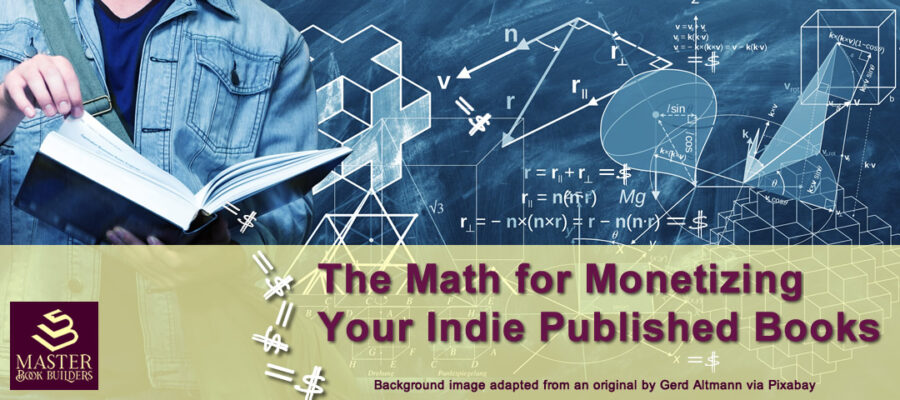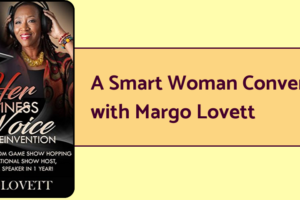[TfTi] The Math for Monetizing Your Indie Published Books
This post builds on several items in my inbox over the last week or so, as well as our previous posts laying out what we call The Taylor Swift Model of Book Marketing (e.g., here and here). Please don’t be misled by the title or the image. The math I’m talking about is very basic. And I’m not promising that wealth will fall out of your book!
But the two main articles I’m going to discuss dovetail so nicely with the Taylor Swift Model that I had to share them with you.
What Can We Learn from Dying Industries?
The subject line Yvonne forwarded to me said, The Death of the Magazine. Writer Ted Gioia points to both the magazine and newspaper industries as being in downward spirals that seem irreversible. He provides statistics and a list of “dates of death” to back up his claim.
His diagnosis of what is killing these large businesses may seem counterintuitive — it clearly does to the executives overseeing the decline.
Gioia blames the cost-cutting that’s resulted in mass layoffs of writers and journalist, coupled with the constant reduction in the quantity and quality of the written “content” (a term he despises) in those publications. He tells the story of the decline of the National Geographic magzine to the point where,
“In 2022, six editors were fired — the cuts focused on longform journalism, science, and travel. [And] National Geographic would now focus on ‘short-form video, specifically via TikTok and Instagram Reels.'”
The following year, all remaining staff writers were fired. Newstand sales of the magazine were terminated. All written “content” would be produced by freelancers. In Gioia’s view,
“Legacy media’s unwillingness to pay for good writing is the single biggest warning sign that its decline is irreversible.”
What does all this have to do with indie book authors and Taylor Swift? That comes in the contrasting examples he draws. From within the magazine industry, he points to The Atlantic, The New Yorker, and Harper’s, all a hundred years old and more, as maintaining their high standards and thus possibly surviving for the long run.
But the examples that jumped out at me were from outside publishing, the sports, movie, and similar industries. Here’s the nugget that connects us back to Taylor and the way she’s built and maintains her stardom on her real, authentic relationships with her Swifties:
“Sports teams and movie studios are good examples of flexible businesses that have already figured out that audience loyalties are attached to star talent — not business brands.”
Read that again. Audiences attach their loyalty to the talent — the human beings creating the value — NOT the business brand. He explains:
“Imagine if you owned the Lakers or the Yankees, and put all the emphasis on the team brand — but kept reducing the pay to actual players.”
This is one reason we recommend you have an author website, not a book website. Yes, your book(s) will be featured on your site. But the domain name, homepage, about page, blog, and more should all be designed to feature you first and foremost and to build relationships with your audience.
What Hope for the Writers?
Gioia offers a path forward for the writers jettisoned by the publishing industry and it rings true to the Taylor Swift model: go directly to your audience on platforms like Substack or Medium. He suggestes the the growth of these subscriber supported and writer controlled publications demonstrate that:
“Readers are hungry for the longer, smarter writing … As a result, readers increasingly bypass the magazine and deal directly with writers.”
And for the writers who are smart enough to treat their readers the way Taylor treats her fans:
“Readers are now more loyal to writers than they are to periodicals. They seek them out. They trust them more.”
We can quibble about whether writers should build their conduit to their audience on somebody else’s platform, which might eventually go the way of the print magazine. But for book authors, we’d stick to our advice to build yours on your own website.
That doesn’t prevent you from using one or more of the social networking or hosting platforms like LinkedIn, Instagram, or Substack as a place to post and share links to your longer form writing, perhaps even as an additional income stream. We just believe that maintaining as much ownership and control of your content as possible is the way to go. That’s the main point of Indie Publishing, right?
What About the Math?
Speaking of income streams, the other article I’m sharing here is from Kevin Kelly, called 1,000 True Fans.
The short version:
“To be a successful creator you don’t need millions. You don’t need millions of dollars or millions of customers, millions of clients or millions of fans. To make a living as a craftsperson, photographer, musician, designer, author, animator, app maker, entrepreneur, or inventor you need only thousands of true fans.”
What does he mean by a true fan? Someone who “will buy anything you produce.”
He expands on this a bit, making the direct connection between a singer and an author:
“These diehard fans will drive 200 miles to see you sing; they will buy the hardback and paperback and audible versions of your book; they will purchase your next figurine sight unseen; they will pay for the “best-of” DVD version of your free youtube channel; they will come to your chef’s table once a month.”
He tells us that if you have roughly a thousand fans like this, you can make a living. To do so, he lays out two simple criteria:
“First, you have to create enough each year that you can earn, on average, $100 profit from each true fan.”
See how simple that math is? 1,000 true fans X $100 profit = $100,000 income, before taxes.
As Kelly points out, your situation may be different. You may need more, or less, total income for your preferred lifestyle. This can be accomplished by adjusting either the number of true fans, or the amount of profits per fan.
Now, for a book author to average $100 profit per fan may not seem doable. And if you’re relying on book sales alone, frankly the chances of getting there on your first book or three are slim and none. That’s why we encourage authors to see their book as just one part of their “author business” and plan from the outset to develop multiple income streams, with the book as the anchor.
Keeping with the simple math, let’s say you sell 1,000 copies to your true fans in the first year (I’m not saying this will happen, especially with a first book, but just playing out the scenario). If you’re indie publishing, you may expect to net around $10 per copy, so that could get you to $10,000. Optimistic, and still far from the $100,000 target.
To close the gap, you might pursue other channels revolving around your book, such as:
- Paid speaking engagements (if you can expect some of your true fans to attend events, you could command decent speaking fees and/or book sales; in addition, this channel and most on this list could lead directly to sales of your existing business’ products or services, assuming you wrote the book to display your expertise in that realm)
- Online courses (for nonfiction authors, these could be based on and expand the information in the book; for fiction authors, you might teach topics around writing and the business of authorship)
- Coaching (similar to online courses, but with more of your personal involvement)
- Merchandise and digital products (think mugs, t-shirts, as well as supplemental content related to your book like workbooks, calendars, journals, and more)
- Paid members-only areas on your site (with exclusive high-value content and access to you).
Most of these involve some direct interaction between you and your fans. That’s a good thing, when you find out Kelly’s second criterion for the true fans concept:
“Second, you must have a direct relationship with your fans.”
Okay, full disclosure. Kelly is talking about a direct financial relationship with your fans, so that when they pay for your creative output, the money goes directly to you. As he puts it,
“You get to keep all of their support, unlike the small percent of their fees you might get from a music label, publisher, studio, retailer, or other intermediate.”
But when I read that “direct relationship with your fans” line, it screamed to me the kind of relationship that Taylor has with the Swifties. And of course, while she pays lots of people to help produce and distribute her music and produce her tours, she has become an indie artist in the basic sense we’re talking about, setting up her own 13 Management company and Taylor Swift Productions, with ultimate control over all of it.
You’ll need to start with one or a handful of true fans and build from there. But the math is simple and getting to 1,000 is quite plausible, if you follow the Taylor Swift model.






Leave a Reply